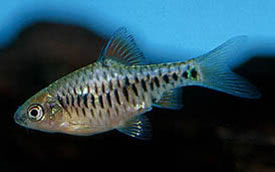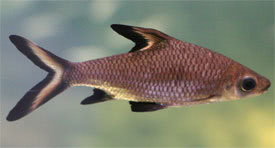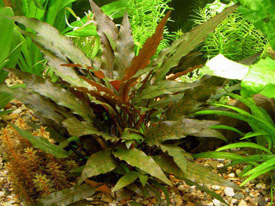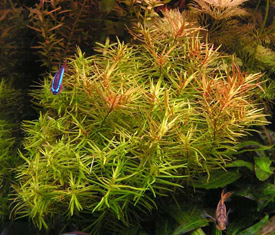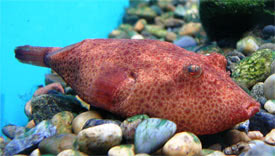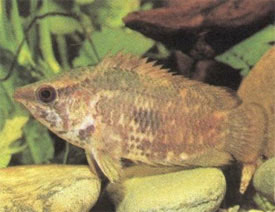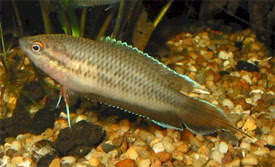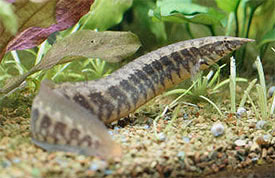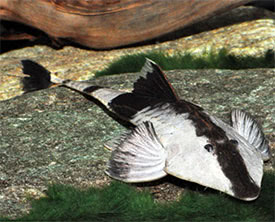
 Magyarul / Hungarian
Magyarul / Hungarian



- Scientific name: Trichogaster labiosa
- Synonyms: Colisa labiosa, Colisa labiosus
- Common name: Thick-lipped Gourami, Thicklip Gourami
- Group: Labyrinth fishes
- Habitat: Asia; South Myanmar (Burma)
- Size: 6-8 cm
- Biotope: Shady, slow-moving rivers and ponds, with lots of floating vegetation.
- Social behavior: Peaceful fish, best keep in a community tank. Do not keep it with the closely-related banded gourami, because they may hybridise.
- Diet: Omnivorous; quality flake or pellet foods, live and frozen foods.
- Breeding: Quite easy
- Tank: Minimum 70 litres
- Population: 1 couple for 80 litres
- Decoration: Prefers a darker tank bottom with heavy vegetation. Water flow should be minimal. Use floating plants to dim the lighting.
- Temperature: 22-27 °C
- pH: 6-7.5.
- Hardness: 5-15 NK°
- Lifespan: 4 years
Description: Their body colors varies, but the back is usually dark orange-brown, while the belly is dark turquoise. The flanks are orange-brown with alternating transverse, turquoise stripes. Females are less colorful, with a white-silver belly region. The pelvic fins are threadlike and extremely sensitive. Thick-lipped Gourami also has a golden color variant, which has most or all of the blue colors bred out, and a warmer and lighter body color of red, orange, or yellow.
Males have pointed dorsal fins and they are more colorful, especially during the spawning. The Thick-lipped Gourami is a bubble nest builder. Use a separate tank for spawning, with shallow water (15-20 cm), and use plenty of floating plants and fine-leaved plants to provide shelter for the female. Use sponge filter, and reduce the water movement to minimal. The tank shuold have tight cover, as the fry need access to a layer of warm, humid air, for their labyrinth organ development. For a couple of weeks keep the male and female separated, and feed them with live and frozen foods to get them in condition. When the female is full with eggs, transfer her to the spawning tank. After 1-2 days put the male to the tank. The male will spend a lot of time building a large bubble nest. The male will display to the female constantly, and when she is ready to spawn, she will approach the nest. Spawning occurs under the bubblenest: the male wraps his body around the female, while she release the eggs. The male gather the eggs with his mouth and spit them into the nest. The number of the eggs can be around 500. The female must be removed at this point, as the male guards the brood agressively. The eggs hatch in around 24-36 hours, and the fry become free swimming in another 2-3 days. The male should be removed at this time. The fry are very small, and should be fed infusoria or liquid fry food for the first week. After a few weeks, they are large enough to accept brine shrimp nauplii and powdered flake.



















